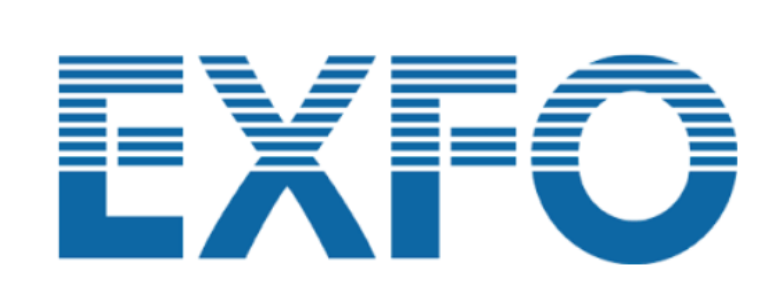
Based in Quebec City, Canada, EXFO offers a blend of equipment, software and services that enable 5G, cloud-native and fiber optic networks. The company was founded in 1985 by Germain Lamonde, an engineering student who became an innovator in fiber optic testing. Last year, EXFO was taken private after being a public company for 22 years. It has over 1,900 employees and does business in more than 100 countries, with offices in Singapore, China, India, the United Kingdom, France, Germany, Spain, Sweden, Finland, Mexico, and the United States.
At NATE Unite 2023, Inside Towers caught up with EXFO’s Stephane Chabot, Vice President Global Business Development and Astra Baltayan, Marketing Manager. Chabot told Inside Towers, “One of our main focuses is the field or outside plant market, where we offer an entire breadth of test solutions for both wireline and wireless converged networks, as well as what we call all-in-one global solutions.”
In particular, EXFO serves all major U.S. MNOs, network operators, cable companies, hyperscalers, as well as the enterprise sectors.
Carriers Scaling 5G Networks Fast
As 5G is deployed, MNOs are being challenged with large-scale buildouts like never before. Networks are increasing in size and densifying with more nodes being deployed, requiring 20 times more fiber to connect small cells in urban areas.
Carriers also face competitive pressure to be there first with nationwide, high-speed, low-latency networks. “We’re helping them build out those 5G networks better and faster, trying to meet tight timelines for completion,” Chabot said. “Sometimes we’re on national calls, because our solutions are being used during site installation, but also for turn up and for troubleshooting.”
Managing the coexistence of 5G and 4G technologies in non-standalone networks has been a significant challenge for MNOs, according to Chabot. The skill sets of technicians in the field are being stretched by the demand to test both fiber optics, high-speed and RF at towers—and validate services.
“Technicians need to be versatile,” Chabot said. “They need to be familiar with the hardware, as well as the software at the tower site—especially with the emerging role of virtualization in 5G.” In addition, 5G network complexity poses further challenges for MNOs, with the introduction of new frequency bands, broader frequency ranges, carrier aggregation, massive MIMO and millimeter wave radios.
Mitigating the Trouble with PIM
PIM is another hot topic carriers discuss with EXFO. “5G, particularly 5G non-standalone, introduces a wide range of frequency bands that come with the requirement for new types of antennas and components. With more frequencies being deployed in 5G non-standalone, particularly in the low and mid-bands, the instances and effects of both internal and external PIM and RF interference across networks are increasing,” Chabot said. “Troubleshooting external or internal PIM can be an expensive and manual process. And when the issue involves internal PIM, it typically requires a visit by a tower technician to solve, which yet again, increases those operational costs.”
Tower technicians need to be confident that once they go up the tower, they can successfully resolve an internal PIM issue. Otherwise, a costly second tower climb may be required. In addition to being expensive, the entire process of finding and resolving an internal PIM issue can take weeks to complete. This is due in part to the analysis required, which is usually a 90% manual effort. When PIM is external, the process is similar to RF interference hunting, where a technician is dispatched onsite and uses a spectrum analyzer to pinpoint the source of interference. The process of interference hunting is highly manual and typically requires RF expertise.
The Differentiators
EXFO brings simplification and automation throughout the process, to ensure that all testing is performed right-the-first-time. With the press of a button, all test parameters, settings and interpretation of results can be achieved. The test equipment is designed with the needs of field technicians in mind, according to Astra Baltayan.
“We look at how they perform tests and what they require to do their jobs efficiently. Then we design our solutions around what they actually need,” Baltayan explained. “We’re providing a solution that’s simple to use so they can quickly and accurately validate cell sites.”
This video shows how EXFO makes 5G deployments more efficient.
To get the job done, field technicians usually carry 3-5 different types of test equipment usually from multiple vendors. Since each piece of equipment has a different user interface and process, the testing process is slower and more complicated. EXFO’s FTB 5GPro test kit offers an all-in-one solution that supports RF testing, fiber inspection and characterization, CPRI/eCPRI protocol validation, RF spectrum analysis over CPRI, Ethernet (up to 100G), timing and synchronization, and much more.
“This comprehensive solution reduces the number of devices field technicians need to use and guarantees that they have the right tool for the job,” Chabot said. “This speeds up jobs and reduces overall total cost of ownership for operators and contractors.”
Because it is modular in design, the FTB 5GPro solution allows the user to choose the testing capabilities they need, including rates up to 100G and FR1(low and mid-band) or FR2 (mmWave) bands—all with the same equipment. “The solution is future-proof,” Chabot said. “Our customers know that they can use the solution today as well as several years from now, protecting their investment for years to come.”
EXFO also provides its customers with test process automation for maximum efficiency. With optimized field testing and reporting, workflows, troubleshooting processes and more, technicians can complete their tasks more efficiently, allowing them to move on to the next job. “The result is fewer truck rolls and reduced operational expenses. Technicians are also empowered, through a connected workspace, to do their job faster and better,” Chabot said.
Conclusion
To keep up with the speed of 5G buildouts, EXFO provides field technicians with the right tools and ensures that correct procedures are in place. EXFO’s easy-to-use, automated and innovative test solutions empower operators and contractors to efficiently validate next-gen fiber-based mobile networks and ensure that 5G deployments are done right the first time, according to the company. To learn more about EXFO, visit www.exfo.com.
By J. Sharpe Smith, Inside Towers Technology Editor




Reader Interactions